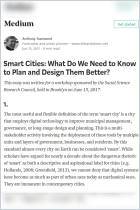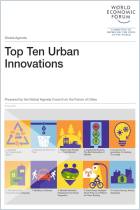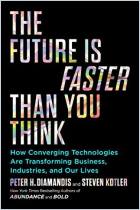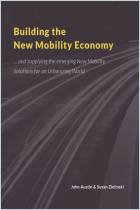Recommendation
Rapid change means today’s cities demand new, creative responses to the needs of the billions of people living and working in them. But most cities still apply 20th-century solutions to 21st-century problems. Learn how the smart city movement aims to change that using people-focused technology to improve city-dwellers’ quality of life. This practical, well-organized guide is a great resource for leaders, stakeholders and anyone interested in the urban future.
Summary
About the Author
Dr. Jonathan Reichental is a multiple award-winning technology and business writer whose career spans the public and private sectors.
Learners who read this summary also read
Article
Report
Book



















Comment on this summary or 开始讨论